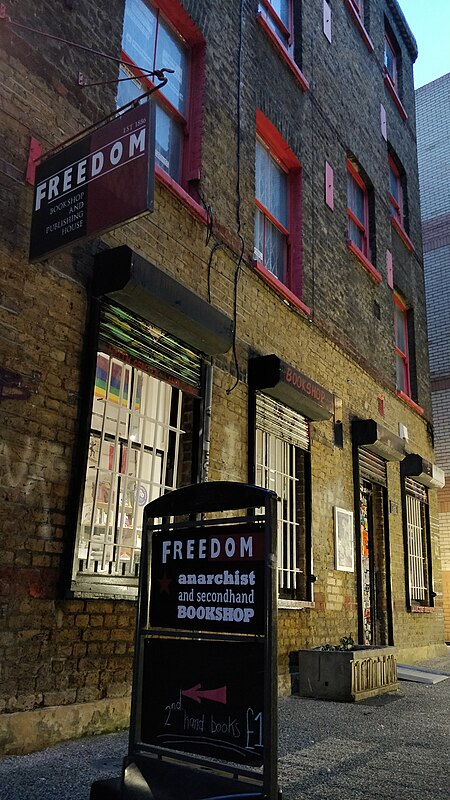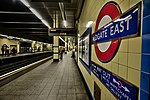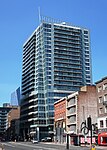Freedom Press

Freedom Press is an anarchist publishing house and bookseller in Whitechapel, London, United Kingdom. Founded in 1886, it is the largest anarchist publishing house in the country and the oldest of its kind in the English speaking world. It is based at 84b Whitechapel High Street in the East End of London. Alongside its many books and pamphlets, the group also runs a news and comment-based website and until recently regularly published Freedom, which was the only regular anarchist newspaper published nationally in the UK. The collective took the decision to close publication of the full newspaper in March 2014, with the intention of moving most of its content online and switching to a less regular freesheet for paper publication.Other regular publications by Freedom Press have included Freedom Bulletin, Spain and the World, Revolt! and War Commentary.
Excerpt from the Wikipedia article Freedom Press (License: CC BY-SA 3.0, Authors, Images).Freedom Press
Whitechapel High Street, London Whitechapel
Geographical coordinates (GPS) Address External links Nearby Places Show on map
Geographical coordinates (GPS)
| Latitude | Longitude |
|---|---|
| N 51.5161 ° | E -0.0707 ° |
Address
Freedom Bookshop (Freedom Press;Freedom Book Shop;Freedom Publishing)
Whitechapel High Street 85a
E1 7QX London, Whitechapel
England, United Kingdom
Open on Google Maps







